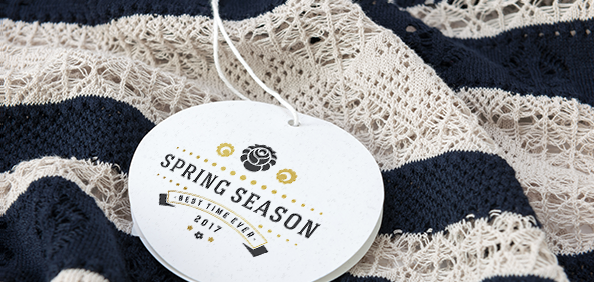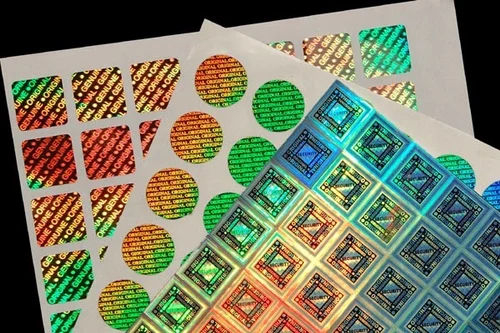We’ve all run a finger across a label to feel the grain, checked a seam to see the quality of stitching, or instinctively flipped a collar to see where a garment came from. Why? Because somewhere along the line, we’ve learned that what’s inside a product often starts with what’s stitched onto it. In short: your label tells your story before the product does.
For fashion brands, artisanal creators, or even boutique homeware producers, fabric labels aren’t an afterthought. They’re a quiet ambassador of brand values, carrying your identity into the customer’s hand, laundry room, and memory. Which is why getting them right isn’t just about design. It’s about strategy.
What a Fabric Label Really Communicates
At a glance, a fabric label seems small. But its impact is layered:
- Credibility: Professionally designed labels elevate a product from “homemade” to “handcrafted.” They signal investment and pride.
- Durability: Unlike paper tags or custom sticker labels, fabric options endure wear, washing, and daily handling without degrading.
- Functionality: From care instructions to size indicators and origin statements, labels serve both legal and practical roles.
- Memory: Consumers often recall a label long after the product has worn in—or worn out. It’s part of the lasting emotional imprint.
Key Elements in Custom Fabric Label Design
Designing a fabric label isn’t just about choosing a logo and slapping it onto cloth. It’s about thoughtful coordination—form, function, and feeling all working together. Below are the critical factors to consider when designing yours.
1. Material Selection
Different fabrics convey different messages. Satin suggests luxury. Cotton leans organic. Damask offers fine detail and high resolution. Nylon is durable and cost-effective.
Ask: What’s the feel of my brand? What’s the expected use environment of the product?
2. Layout
Straight cut, end fold, centre fold, loop fold—each layout offers different visual and tactile experiences. For instance, centre folds are ideal for including care instructions on the reverse, while end folds are common for external branding.
3. Typography and Icons
Font choices, sizes, spacing, and symbols all influence readability and tone. A serif font might evoke tradition; a minimal sans-serif might whisper modern elegance. Don’t overcrowd—space is limited, so every detail must earn its place.
4. Colour
Subtlety has its place, but readability is a must when it comes to branding. Ensure sufficient contrast between text and background. Match colour tones to your broader brand palette, especially if the label is visible on the outside of the product.
5. Information
If your label must contain legal disclaimers, washing instructions, country of origin, or certifications (e.g. OEKO-TEX®), structure the content clearly. Prioritise the brand first, then auxiliary data.
Beyond Clothing: The Broader Utility of Fabric Labels
While they’re most commonly seen in apparel, fabric labels are making their mark in more than just fashion. Consider:
- Bedding & Linen: High-end sheets and towels often feature woven labels for size, care, and brand identity.
- Baby Products: Safety info and branding in one soft, child-safe format.
- Bags & Accessories: Subtle woven labels can reinforce a sense of craftsmanship.
- Upholstery: Long-lasting identification that withstands friction and sunlight.
Mistakes to Avoid With Fabric labels
Poorly executed labels don’t just go unnoticed, but also actively degrade trust. Watch out for:
- Overly Complex Artwork: Tiny fonts, intricate logos, or excessive detail may end up blurred in weaving or printing.
- Wrong Material for Application: Using satin on outdoor gear or cotton in high-abrasion zones leads to premature wear-and-tear.
- Lack of Wash Testing: Colours can fade or bleed if not tested under realistic laundering conditions.
- Missing Legal Info: Depending on your export market, omitting care instructions or fibre content can land you in hot water.
The best way to avoid these? Test your labels repeatedly, on product samples and under customer conditions.
Labels That Speak Without Saying a Word
Consumers today want more than just a product. They want to feel that they’re buying into something. They read between the stitches. Labels offer one of the few opportunities to build that narrative in a physical, persistent way.
Think about your favourite garment. Odds are, you remember how it fits. But you may also remember the weight of the tag, the clarity of the brand, or how it caught the light the first time you wore it. That’s the power of a well-designed label. It turns a purchase into an experience. A transaction into memory.
Printsys: Where Fabric Labels Meet Legacy
When you’re ready to transform your label from functional to unforgettable, PRINTSYS PTE LTD. brings both craftsmanship and technology to the table. Their fabric label solutions are tailored to reflect your brand’s voice, with meticulous attention to detail, from substrate to stitching line.
Whether you’re a growing brand seeking consistency, or an established one refining your identity, Printsys works collaboratively to design labels that don’t just stick; they stay. Discover the right fit for your product with Printsys custom fabric labels and add the kind of finishing touch that customers feel, remember, and trust.




